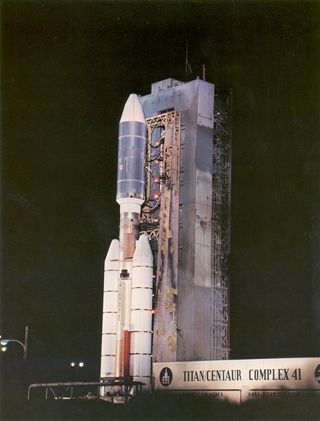Space History Photo: Voyager 2 Launch

In this historical photo from the U.S. space agency, Voyager 2's August 20, 1977 launch, which was sixteen days before Voyager 1 aboard a Titan-Centaur rocket. Their different flight trajectories caused Voyager 2 to arrive at Jupiter four months later than Voyager 1, thus explaining their numbering.
The initial mission plan for Voyager 2 specified visits only to Jupiter and Saturn. The plan was augmented in 1981 to include a visit to Uranus, and again in 1985 to include a flyby of Neptune. After completing the tour of the outer planets in 1989, the Voyager spacecraft began exploring interstellar space. The Voyager mission has been managed by NASA's Office of Space Science and the Jet Propulsion Laboratory.
Each weekday, SPACE.com looks back at the history of spaceflight through photos (archive).
Get the Space.com Newsletter
Breaking space news, the latest updates on rocket launches, skywatching events and more!
Join our Space Forums to keep talking space on the latest missions, night sky and more! And if you have a news tip, correction or comment, let us know at: community@space.com.

The National Aeronautics and Space Administration (NASA) is the U.S. government agency in charge of the civilian space program as well as aeronautics and aerospace research. Founded in 1958, NASA is a civilian space agency aimed at exploring the universe with space telescopes, satellites, robotic spacecraft, astronauts and more. The space agency has 10 major centers based across the U.S. and launches robotic and crewed missions from the Kennedy Space Center in Cape Canaveral Florida. It's astronaut corps is based at the Johnson Space Center in Houston. To follow NASA's latest mission, follow the space agency on Twitter or any other social channel, of visit: nasa.gov.
